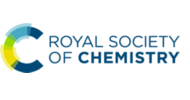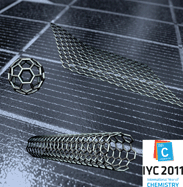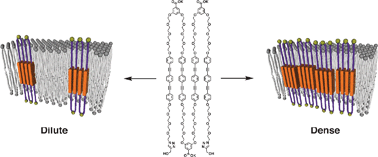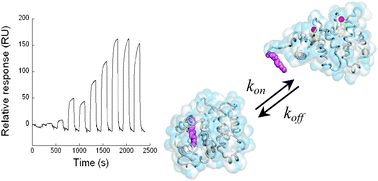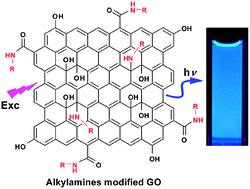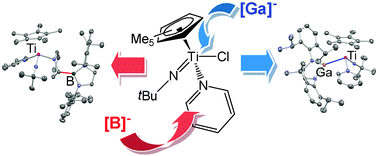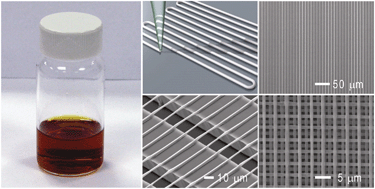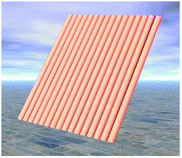This month sees the following articles in ChemComm that are in the top ten most accessed:-
Potassium carbonate-silica: a highly effective stationary phase for the chromatographic removal of organotin impurities
David C. Harrowven, Dennis P. Curran, Sarah L. Kostiuk, Ian L. Wallis-Guy, Sally Whiting, Kerri J. Stenning, Bencan Tang, Emma Packard and Lana Nanson
Chem. Commun., 2010, 46, 6335 – 6337, DOI: 10.1039/c0cc01328e
Hybrid nanomaterials for biomedical applications
Kathryn M. L. Taylor-Pashow, Joseph Della Rocca, Rachel C. Huxford and Wenbin Lin
Chem. Commun., 2010, 46, 5832 – 5849, DOI: 10.1039/c002073g, Feature Article
A highly sensitive, selective, colorimetric and near-infrared fluorescent turn-on chemosensor for Cu2+ based on BODIPY
Shouchun Yin, Volker Leen, Sven Van Snick, Noël Boens and Wim Dehaen
Chem. Commun., 2010, 46, 6329 – 6331, DOI: 10.1039/c0cc01772h
Pd nanoparticles in silica hollow spheres with mesoporous walls: a nanoreactor with extremely high activity
Zhe Chen, Zhi-Min Cui, Fang Niu, Lei Jiang and Wei-Guo Song
Chem. Commun., 2010, 46, 6524 – 6526, DOI: 10.1039/c0cc01786h
Immunosensor for the detection of cancer biomarker based on percolated graphene thin film
Minghui Yang and Shaoqin Gong
Chem. Commun., 2010, 46, 5796 – 5798, DOI: 10.1039/c0cc00675k
High-yield exfoliation of three-dimensional graphite into two-dimensional graphene-like sheets
Eun-Kyoung Choi, In-Yup Jeon, Seo-Yoon Bae, Hwa-Jung Lee, Hyeon Suk Shin, Liming Dai and Jong-Beom Baek
Chem. Commun., 2010, 46, 6320 – 6322, DOI: 10.1039/c0cc00753f
A photoelectrochemical device for visible light driven water splitting by a molecular ruthenium catalyst assembled on dye-sensitized nanostructured TiO2
Lin Li, Lele Duan, Yunhua Xu, Mikhail Gorlov, Anders Hagfeldt and Licheng Sun
Chem. Commun., 2010, DOI: 10.1039/c0cc01828g
High quality graphene with large flakes exfoliated by oleyl amine
Jian Zheng, Chong-an Di, Yunqi Liu, Hongtao Liu, Yunlong Guo, Chunyan Du, Ti Wu, Gui Yu and Daoben Zhu
Chem. Commun., 2010, 46, 5728 – 5730, DOI: 10.1039/c0cc00954g
Synthesis and characterization of gold-deposited red, green and blue fluorescent silica nanoparticles for biosensor application
Kyoung G. Lee, Rinbok Wi, Tae Jung Park, Sun Hong Yoon, Jaebeom Lee, Seok Jae Lee and Do Hyun Kim
Chem. Commun., 2010, 46, 6374 – 6376, DOI: 10.1039/c0cc00762e
Monodispersed molecular donors for bulk hetero-junction solar cells: from molecular properties to device performances
Silvia Colella, Marco Mazzeo, Roberto Grisorio, Eduardo Fabiano, Giovanna Melcarne, Sonia Carallo, M. Daniela Angione, Luisa Torsi, Gian Paolo Suranna, Fabio della Sala, Piero Mastrorilli and Giuseppe Gigli
Chem. Commun., 2010, 46, 6273 – 6275, DOI: 10.1039/c0cc01229g
Why not take a look at the articles today and blog your thoughts and comments below.
Fancy submitting an article to ChemComm? Then why not submit to us today or alternatively email us your suggestions.
![]() Developing environmentally friendly, renewable energy is one of the challenges to society in the 21st century. One of the renewable energy technologies is solar energy conversion — a technology that directly converts daylight into electricity.
Developing environmentally friendly, renewable energy is one of the challenges to society in the 21st century. One of the renewable energy technologies is solar energy conversion — a technology that directly converts daylight into electricity. 
